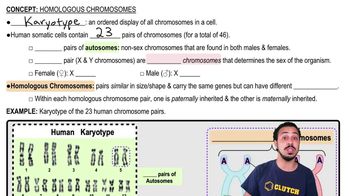Which of the following characteristics of plants is absent in their closest relatives, the charophyte algae?
a. Chlorophyll b
b. Cellulose in cell walls
c. Sexual reproduction
d. Alternation of multicellular generations
 Verified step by step guidance
Verified step by step guidance Verified video answer for a similar problem:
Verified video answer for a similar problem:

